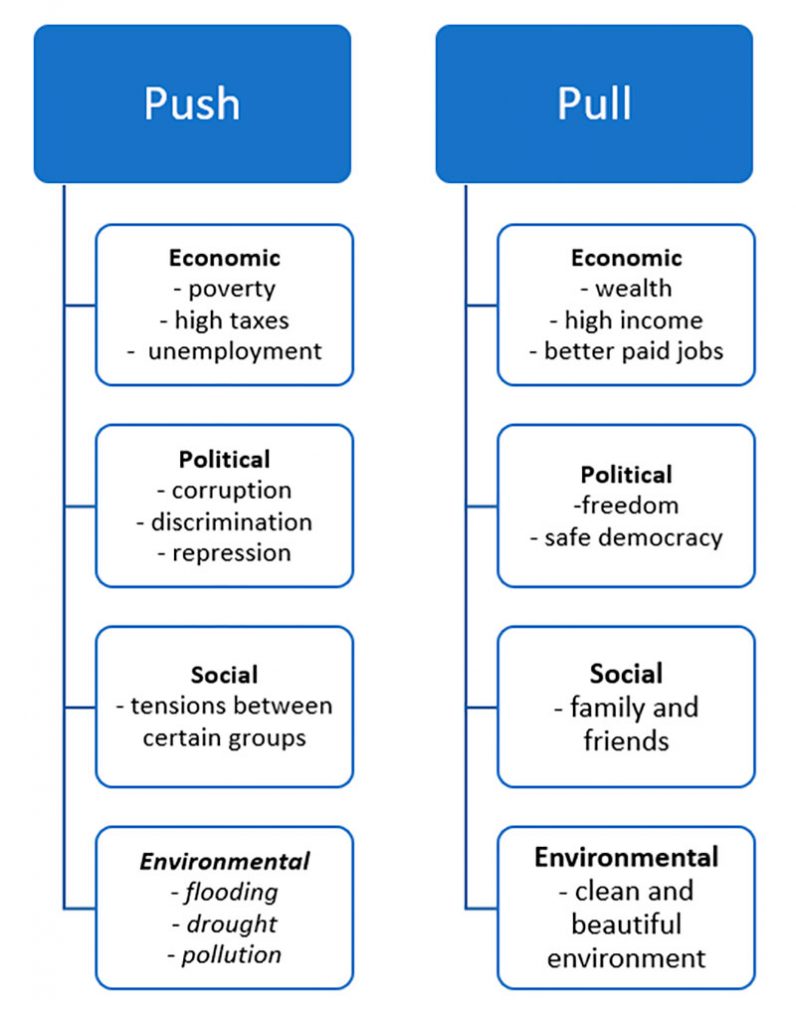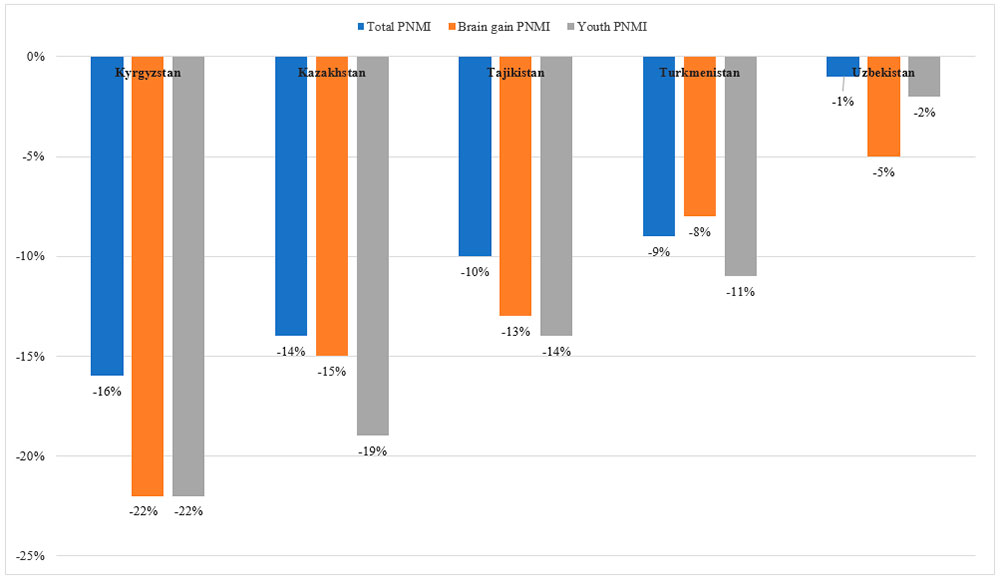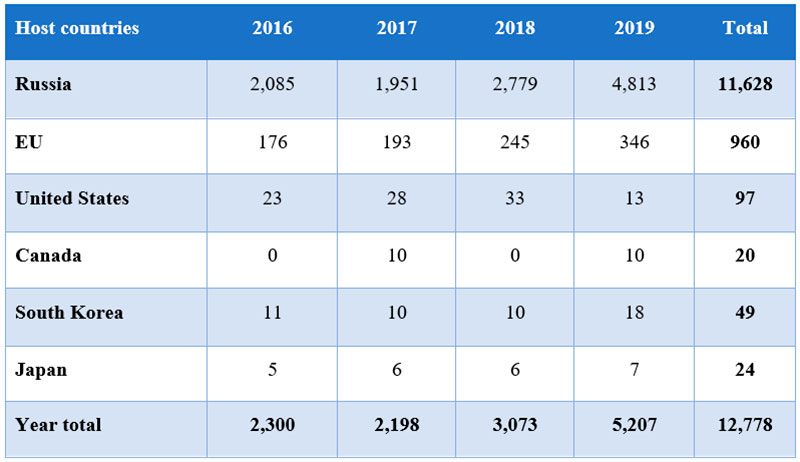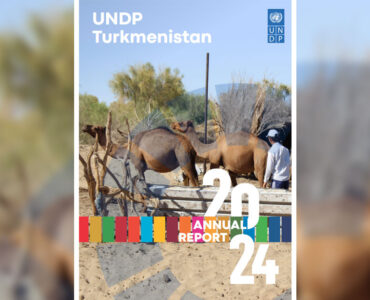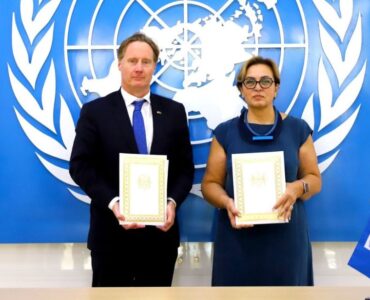Young people and working age adults, especially women are the most likely group to emigrate from Turkmenistan in search for better educational and employment opportunities. Turkey and Russia are the top two destination countries both for students and labour migrants from Turkmenistan. It is estimated that near one million Turkmens reside in Turkey alone.
With the rise of globalisation, we experience unprecedented human mobility. Since the times of the Silk Road Turkmenistan has been on the crossroads of goods and people. However, with the creation of nation states and state borders, the movement of people are much more controlled than before. Countries have specific policies to manage the inflow and outflow of people within their borders. Turkmenistan is among the few countries which has very strict and regulated border controls which aim to curtail such movement. Human Rights Watch classifies Turkmenistan among the most isolated and closed countries.
This article provides a brief overview of Turkmenistan’s emigration policy to understand why do Turkmen citizens chose to move abroad, who is likely to emigrate and where do Turkmens decide to move.
What is Turkmenistan’s emigration policy?
The State Migration Service of Turkmenistan (SMST) is in charge of the migration policy (both emigration and immigration) and for adherence to international agreements on migration. The SMST website is available in Turkmen, Russian and English languages. The agency provides some online services such as booking an appointment for renewing international passports. Although international law mandates that countries renew passports of their citizens overseas at their respective embassies and consular services, Turkmen embassies refuse to do so. Moreover, Turkmenistan’s Law on Migration from 31 March 2012 (Article 29, paragraph 3) states:
“Citizens of Turkmenistan permanently residing outside Turkmenistan apply to the State Migration Service of Turkmenistan through the diplomatic missions and consular offices of Turkmenistan in foreign countries to obtain a passport. Passports to these citizens are issued at the central office of the State Migration Service of Turkmenistan and handed over to them through diplomatic missions and consular offices of Turkmenistan in foreign countries. While on the territory of Turkmenistan, they can apply to the migration service to obtain a passport”.
Nevertheless, citizens have to travel to Turkmenistan and apply to renew their national and international passports in the place of their registration. In addition to being a lengthy procedure, passport renewal process gives Turkmen authorities a reason not to renew or delay the process or even refuse exit from the country. This creates legitimate concerns and fear among Turkmen citizens who dread going back to Turkmenistan. Some decide to change their citizenship in order not to risk being locked in the country.
Since the start of the COVID-19 pandemic traveling to and from Turkmenistan became almost impossible. Many citizens were stranded abroad unable to travel back to Turkmenistan while few even died and were buried oveseas. Those whose passports have expired were not able to renew their passports at the Turkmen embassies. Eventually, the Turkmen consulates provided a stamp that would extend the validity of their passports.
While the Law on Migration states that Turkmens can freely leave the country to study and work abroad, Turkmen government routinely restricts migration by imposing travel restrictions on certain categories of the population. The Law on Migration allows the government to deny citizens exit from the country “if their exit contravenes national security”. In practice, however, the law is arbitrarily applied including to cases where there is no apparent or proven security concerns. As the NGO Prove They Are Alive! reported, there were estimated 20,000 individuals who were subject to a travel ban based on political grounds. Even students who are sponsored by foreign governments are prevented from traveling abroad unless their programs are approved by the Ministry of Foreign Affairs (Human Rights Report, 2021).
Moreover, most people leave Turkmenistan legally and remain in destination countries upon expiration of their visas. When returning to Turkmenistan they are centrally registered and their passports are stamped with a ban on leaving Turkmenistan (Migrants and Refugees, 2020). Such bans can last for several years denying people their right of freedom of movement.
Why do Turkmens decide to emigrate?
Reasons that influence people to emigrate can be categorized as push and pull factors. Origin and destination countries have both positive and negative characteristics. Positive factors pull people to migrate to a new country while negative factors push people away from their countries of origin. In the absence of intervening obstacles people naturally want to move to attractive destinations. Obstacles might be natural such as a mountain, desert or sea or human made obstacles such as strict migration policy or border controls. Push-pull factors can be defined in four categories summarised in the figure below.
Figure 1. Push and pull factors as drivers of migration
Source: BBC
As Oxus Society summarises, the main reasons for Central Asians to emigrate are economic, including:
- economic crisis in home country
- chronic unemployment
- lack of good educational opportunities
- poor social protection
- poverty
This is also the case in Turkmenistan, where people primarily emigrate for work and study. While official sources claim the population of Turkmenistan to be over 6 million, according to alternative media a total population of the country is only 2.7-2.9 million people due to increasing emigration and decreasing fertility rates. There are estimates that between 2008 and 2018 near 1.9 million Turkmens had left the country mainly due to deteriorating economic and political conditions. In 2016 the total number of labour migrants from Turkmenistan was around 200,000-300,000 people.
People who have higher standard of living generally have less desire to emigrate. As the World Bank estimates, improving satisfaction with local public services has the same impact on lowering intention to migrate as extra USD 500 a month in salary. Hence, as Sergei Guriev, the Chief Economist for the European Bank for Reconstruction and Development (EBRD) suggests, countries such as Turkmenistan could reduce people’s desire to emigrate by improving the business environment and public services in the country.
Who is emigrating from Turkmenistan?
Turkmenistan is a country of emigration, meaning more people leave Turkmenistan than settle there. International migrant stock estimates the number of people born in a country other than that in which they live. As Figure 2 illustrates, international migrant stock for Turkmenistan has steadily decreased since early 1990s. For instance, in 1990 over 306,500 citizens of Turkmenistan have moved and settled in foreign countries while in 2019 this number was only 195,127, which is a decline of 36.3%.
Figure 2. International Migrant Stock for Turkmenistan at mid-year, 1990-2019
Source: United Nations,
Department of Economic and Social Affairs,
Population Division (2019).
More women leave Turkmenistan compared to men (see Figure 3). This might be because it is easier to find work for women compared to men. For example, in Turkey, which is the top destination for Turkmen labour migrants, it is easier for women to find jobs in the services sector, including living in families and caring for children, the sick and the elderly (Migrants and Refugees, 2020).
Figure 3. International migrant stock for Turkmenistan at mid-year by sex, 1990-2019
Source: United Nations,
Department of Economic and Social Affairs,
Population Division (2019).
Young people are the most likely group to emigrate from Turkmenistan in search of better educational and economic opportunities. According to the IOM survey among Central Asian youth located abroad, 62% cited education as their main reason for emigrating. Based on UN population data Turkmenistan’s population is young with an estimated 46.5% under the age of 24. However, the local education system is unable to accommodate young people’s desire for higher education. For instance, in 2014 only 7% of the 100,000 annual graduates from secondary schools were able to enrol at national universities. While in 2009 only 2,700 Turkmen citizens studied abroad by 2019 the number of Turkmens studying in Russia alone reached over 49,000 (see Table 1).
Table 1. Study visas issued to the citizens of Turkmenistan
Source: Oxus Society
Moreover, Gallup’s Potential Net Migration Index (PNMI) estimates how countries’ populations would change if everyone in the world could live where they wanted. It subtracts the number of people who would want to leave a country from the number of people who want to move there. All Central Asian countries scored negative indicating potential net population loss. In Turkmenistan 9% of adults say they would like to move permanently out of the country if the opportunity arose. While this reflects merely a wish rather than people’s intentions, it still provides useful information about how Turkmenistan’s population could change, not only in numbers but also in terms of human capital. According to the Brain Gain PNMI Turkmenistan would lose 8% of its highly educated people. Similarly, based on Youth PNMI Turkmenistan would see its population of 15- to 29-year-olds decrease by 11%. This can significantly limit Turkmenistan’s future potential because these young and educated adults could drive country’s long-term socio-economic development.
Figure 4. Potential Net Migration Index for Central Asia, 2015-2017
Source: Gallup’s Potential Net Migration Index
Another likely group to emigrate are the working age adults whose primary purpose is to find (better) employment opportunities abroad. After Turkey, Russia is the second largest destination for labour migrants from Turkmenistan. According to the Oxus Society 11,628 people from Turkmenistan received work visas in Russia from 2016-2019. However, unlike Turkey, Russia requires a visa from incoming Turkmen citizens. Visa requirements are also the reason why very few Turkmen citizens emigrate to the countries in the EU, North America and East Asia.
Table 2. Work visas issued to the citizens of Turkmenistan
Source: Oxus Society
Where do Turkmens emigrate?
Turkey is the most popular destination for labour migrants from Turkmenistan. It is among the very few countries with which Turkmenistan has a visa free system. Turkmen citizens can travel and stay in Turkey without a visa for one month and can obtain a residence permit that is renewable on yearly basis. Similarity of the language and culture make it easier for Turkmens to engage in employment, education, and successfully integrate into local community. On average, Turkey receives 20,000-25,000 Turkmen workers per year with the total number reaching almost 500,000 Turkmens. Of this, only a few hundred have applied for political asylum while the rest are economic migrants (Migrants and Refugees, 2020).
In 2019 citizens of Turkmenistan accounted for 14.5% of the foreign immigrant population in Turkey, which is the second largest group after Iraqi citizens. In 2022 there were 124,476 citizens of Turkmenistan residing in Turkey with residence permits (2nd largest group), 102,344 with student term residence permits (2nd largest group) and 4,913 with family term residence permits (6th largest group). However, given the visa-free regime between the two countries, the real number of Turkmens in Turkey is estimated to be much larger, even reaching over one million.
The next most popular destinations for Turkmen citizens are Russia, Belarus, Ukraine, Kazakhstan, Uzbekistan, Iran, Arab Emirates and Saudi Arabia. In 2019, more than 14,000 people moved to Russia and 49,444 Turkmen students enrolled to Russian universities. Most emigration from Turkmenistan is temporary. For instance, around 12,000 Turkmens moved to Russia and returned back to Turkmenistan in 2020. However, there is also a trend towards permanent emigration. For example, the number of Turkmens acquiring Russian citizenship increased from 729 persons in 2017 to 2,451 in 2020.
Emigration is an unavoidable process as long as other countries have and offer better opportunities for Turkmen citizens including better education, economic opportunities, political freedom and high living standards. Instead of trying to restrict and prevent people from leaving Turkmenistan, the government should incentivize people to stay and to voluntarily move back.
Are you currently living in Turkmenistan? Then tell us what makes or could make it attractive for you to stay there for long-term? If you are currently residing abroad, then share your thoughts on how Turkmenistan could incentivize your voluntary relocation to Turkmenistan?
Author: Ogulgerek Palwanova
The opinions expressed in this article are those of the author. They do not necessarily reflect the opinions or views of the editorial group and other authors who write for the publication. Progres.online creates a space for the expression of diverse opinions in Turkmenistan.
SOURCES USED
Gallup’s Potential Net Migration Index
Human Rights Watch, 2021. “Pressure on Turkmen Nationals in Turkey Must Be Stopped”
International Center for Migration Policy Development (ICMPD), 2014. “Turkmenistan Draft Migration Profile Light 2014”, Prague Process Secretariat.
International Labour Organisation (ILO), 2010. “Migration and Development in Tajikistan – Emigration, Return and Diaspora”
International Organization for Migration (IOM), 2020. “Return Migration: International Approaches and Regional Characteristics of Central Asia”
Maarten Vink, Arjan H Schakel, David Reichel, Ngo Chun Luk, Gerard-René de Groot, 2019. “The international diffusion of expatriate dual citizenship”, Migration Studies, Volume 7, Issue 3, Pages 362–383
Migrants and Refugees, 2020. “Migration Profile of Turkmenistan”
Ministry of Justice of Turkmenistan, “The Law of Turkmenistan on Migration, 2012”
Organisation for Economic Co-operation and Development (OECD), 2005. “Glossary of Statistical Terms: Net Migration” 2005


